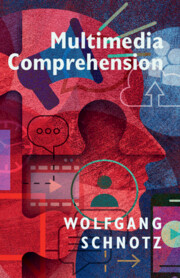Book contents
- Multimedia Comprehension
- Multimedia Comprehension
- Copyright page
- Dedication
- Contents
- Preface
- Chapter 1 Introduction
- Chapter 2 A Short History of Multimedia Sign Systems
- Chapter 3 Basic Forms of Representations
- Chapter 4 Comprehension of Text
- Chapter 5 Comprehension of Pictures
- Chapter 6 Integrative Comprehension of Texts and Pictures
- Chapter 7 Quasi-symbiotic Relations between Text and Picture Comprehension
- Chapter 8 Beyond Comprehension
- Chapter 9 Practical Implications
- Concluding Remarks
- References
- Index
Chapter 5 - Comprehension of Pictures
Published online by Cambridge University Press: 16 February 2023
- Multimedia Comprehension
- Multimedia Comprehension
- Copyright page
- Dedication
- Contents
- Preface
- Chapter 1 Introduction
- Chapter 2 A Short History of Multimedia Sign Systems
- Chapter 3 Basic Forms of Representations
- Chapter 4 Comprehension of Text
- Chapter 5 Comprehension of Pictures
- Chapter 6 Integrative Comprehension of Texts and Pictures
- Chapter 7 Quasi-symbiotic Relations between Text and Picture Comprehension
- Chapter 8 Beyond Comprehension
- Chapter 9 Practical Implications
- Concluding Remarks
- References
- Index
Summary
Pictures are two-dimensional depictive representations. They include static pictures and animations. The latter are defined as pictorial displays that change their structure or other features over time and trigger perception of a continuous change. Static and animated pictures can display static as well as dynamic content. Both can have an envisioning, explanatory, orientation, organizing, and argumentative function. Picture comprehension entails sub-semantic perceptual processing, semantic perceptual processing, and conceptual processing. Sub-semantic perceptual processing is primarily pre-attentive and data-driven. It results in viewer-cantered and object-cantered visual representations. Semantic perceptual processing is attentive and data- as well as knowledge-driven. It results in object or event recognition. Conceptual processing is attentive and primarily knowledge-driven. It creates complex propositional structures and mental models in working memory. Picture comprehension is based on analog structure mapping under the guidance of perceptual and conceptual representations.
Keywords
- Type
- Chapter
- Information
- Multimedia Comprehension , pp. 87 - 122Publisher: Cambridge University PressPrint publication year: 2023

